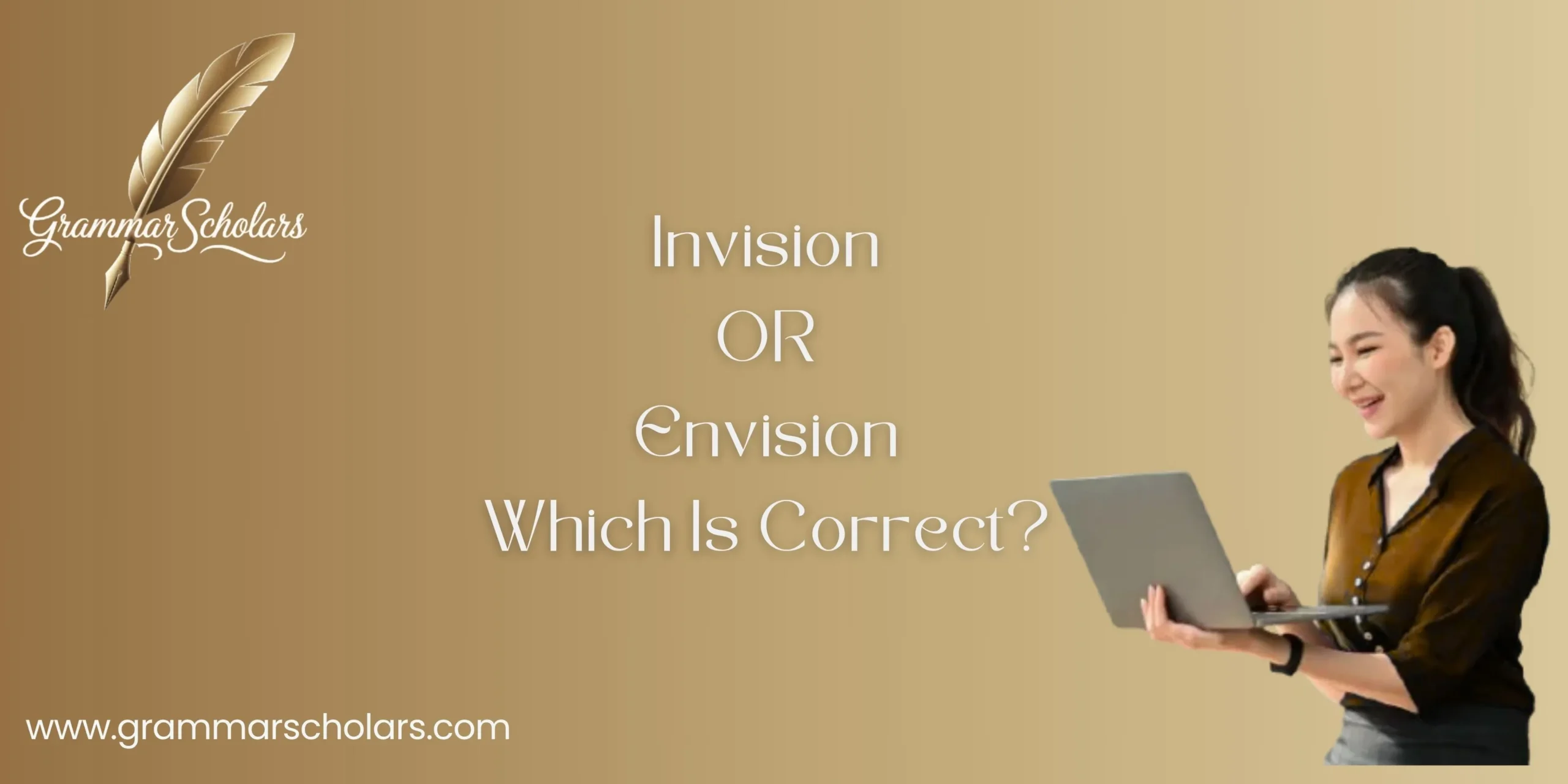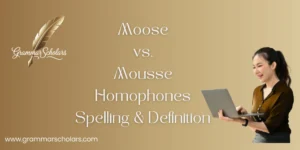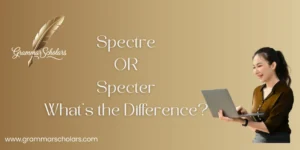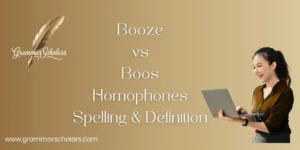I once found myself typing an email, wondering whether to use invision or envision. The confusion was real, both looked correct, and the similarity in pronunciation made things worse. What made it even trickier was the prevalence of the brand InVision, which I frequently used for designing wireframes. It felt natural to assume “invision” might be an accepted spelling in English. But after taking a moment to delve into the details, I realized only one version is correct in standard English usage, and that’s “envision.”
This whole mix-up stems from how brand names and tech products slip into our daily writing habits.
Many people default to the wrong form simply because they’ve seen it used elsewhere. Since then, I’ve made sure to clarify this in my writing classes. Though “invision” seems familiar due to branding, it’s not proper English. This is how a simple mistake becomes normalized. So if you ever find yourself hesitating, even if just once, go with the clear, official, and widely recognized version: envision.
Quick Answer: “Envision” Is Correct
- Envision: A verb meaning to imagine or visualize something.
- Invision: Not recognized as a standard English word; often a misspelling.
- InVision: A proper noun, referring to a specific company or brand.
In standard English, envision is the correct spelling and usage. Invision is typically a misspelling, unless referring to a brand name like InVision, a digital product design platform.
Understanding “Envision”: Definition and Usage
Definition: To picture to oneself; to imagine a future possibility.
Examples:
- “She envisions a world where technology enhances human connection.”
- “The architect envisioned a building that blends with its natural surroundings.”
Usage in Sentences:
- “I envision a future where renewable energy powers our cities.”
- “They envisioned a new strategy to improve customer satisfaction.”
Envision is commonly used in both American and British English without variation in spelling or meaning.
Etymology: The Origins of “Envision”
The word envision is a combination of the prefix en- (meaning “to cause to be”) and vision (from Latin visionem, meaning “act of seeing”).
- First Known Use: 1914
- Root Words:
- En- (to cause to be)
- Vision (sight)
This construction reflects the act of forming a mental image or concept of something not present or yet to happen.
Why “Invision” Seems Plausible
The confusion between envision and invision often arises due to:
- Phonetic Similarity: Both words sound nearly identical when spoken.
- Common Prefixes: The prefix in is prevalent in English (e.g., invisible, intuitive), leading to assumptions about spelling.
- Brand Influence: Companies like InVision popularize the non-standard spelling, reinforcing its usage in certain contexts.
“Invision” as a Brand Name
While invision is not a standard English word, it is used as a proper noun in brand names.
Notable Examples:
Brand Name
Industry
Description
InVision
Digital Design Platform
A tool for prototyping and collaboration in design projects.
Invision Agency
Entertainment
An entertainment company part-owned by The Associated Press.
Invision Community
Software
Internet community software produced by Invision Power Services.
In these cases, InVision is a trademarked name and should be capitalized accordingly.
Synonyms and Related Terms
Understanding synonyms can enhance vocabulary and clarity in communication.
Word
Nuance
Example Sentence
Imagine
To form a mental image of something.
“I imagine a peaceful world.”
Visualize
To form a visual image in the mind.
“She visualized her success on stage.”
Conceive
To form an idea or concept.
“He conceived a plan to improve efficiency.”
Foresee
To be aware of beforehand; to predict.
“They foresee challenges in the upcoming project.”
Picture
To form a mental image.
“Picture yourself on a tropical beach.”
Each synonym carries a slightly different connotation, so choose the one that best fits the context.
Common Errors and How to Avoid Them
Incorrect: “She envisioned a new marketing strategy.”
Correct: “She envisioned a new marketing strategy.”
Tips to Remember:
- Envision starts with “en-“, just like enable or encourage.
- Think of “envision” as “enable your vision”.
Grammar Tips: Remembering the Correct Spelling
To ensure correct usage:
- Mnemonic: Envision = “Enable your vision”.
- Avoid: Using invision unless referring to a brand name.
Check: Spellcheck tools often flag invision as incorrect.
Related Confusing Word Pairs
English is full of words that are easily confused. Here’s a quick guide to some of them:
| Word Pair | Difference |
| Extensible vs. Extendible | Extensible is often used in tech contexts; extendible is more general. |
| Regime vs. Regimen | Regime refers to a government; regimen is a systematic plan, often for health. |
| Each vs. Every | Each emphasizes individuality; every emphasizes totality. |
| Hundreds of Thousands vs. Hundred Thousands | Hundreds of thousands is the correct expression. |
| Pipsqueak | A term for someone insignificant or small. |
| Carpetbagger | A political term for someone who seeks election in an area where they have no local connections. |
Understanding the Common Confusion Between Invision and Envision
It’s easy to confuse invision with envision, especially when they sound the same. But one is correct English, and the other is often a branding choice or typo.
Here’s the basic rule:
- Use envision in professional, academic, or everyday writing.
- Use InVision only when referring to the company.
Despite sounding identical in speech, these two words function very differently in writing, and spelling matters.
Is Envision a Real Word in the Dictionary?
Absolutely. You’ll find envision listed in all major dictionaries:
- Merriam-Webster: to picture to oneself
- Oxford: imagine as a future possibility; visualize
- Cambridge: to imagine or expect something in the future, especially something good
Meanwhile, invision does not appear in any standard English dictionary. This alone is a clear sign that envision is the correct form.
How Language Evolution Affects Spelling
Language is always changing, but that doesn’t mean all changes are correct. Over time, English has simplified some spellings (like catalog instead of catalogue in the U.S.), but there’s no linguistic basis for invision becoming acceptable.
What causes these spelling shifts?
- Usage over time (accepted patterns)
- Mass adoption
- Institutional support (e.g., dictionary editors, education systems)
“Invision” has no such support. It’s a false back-formation based on a misunderstanding of prefixes.
Envision in American and British English
The good news? “Envision” is spelled the same in both American and British English. There’s no regional variant, unlike words like colour/color or organise/organize.
Example in American English:
“The President envisioned a more equitable healthcare system.”
Example in British English:
“She envisioned a company where staff well-being was a priority.”
Note: While visualize is more common in the UK than envision, envision remains unchanged across dialects.
Examples of Correct and Incorrect Use of Envision
Here are real-world sentence comparisons:
| Correct Usage | Incorrect Usage |
| I envision a future of peace. | I invision a future of peace. |
| They envisioned a better plan. | They envisioned a better plan. |
| We must envision new solutions. | We must invision new solutions. |
Tip: Remember, if you’re not referring to a company or product, you rarely need invision.
Envision Meaning in Business and Leadership
In business writing and strategic leadership, envision is a powerful word.
Common uses in business:
- “Envision the future of your industry.”
- “Our CEO envisions global expansion.”
- “We must envision success before we can achieve it.”
Why it matters: Leaders who can envision outcomes are seen as visionary thinkers- capable of strategic foresight.
Quote:
“The best way to predict the future is to envision it.” – Peter Drucker
Visualize vs. Envision: What’s the Difference?
These two are often used interchangeably, but there’s nuance.
| Word | Nuance | Example |
| Visualize | More concrete, sensory-based | “He visualized the layout of the room.” |
| Envision | More abstract, future-oriented | “She envisioned a better society.” |
Both refer to mental imagery, but envision is more conceptual, especially for future scenarios.
Synonyms of Envision You Can Use in Writing
Here’s a list of useful synonyms to vary your vocabulary while keeping the meaning intact:
- Imagine
- Picture
- Visualize
- Foresee
- Conceptualize
- Conceive
- Project
- Predict
- Plan for
Table: Synonym Use Examples
Synonym
Usage Example
Visualize
“He visualized the team’s championship parade.”
Conceive
“She conceived a plan to reduce waste.”
Predict
“They predicted a drop in consumer demand.”
Imagine
“Imagine a workplace free of micromanagement.”
Foresee
“He foresaw the need for early investment.”
How to Teach the Difference Between Invision and Envision
Whether you’re an ESL teacher, a parent, or a writing coach, this confusion can be a useful learning opportunity.
Teaching Tips:
- Use flashcards with correct and incorrect examples.
- Emphasize vision as the root of envision.
- Use mnemonics: “Enable your vision = Envision.”
- Show branded examples of InVision to explain exceptions.
Common Misspellings of Envision and Why They Happen
Besides invision, other incorrect forms people use include:
- invissions
- envisionss
- envission
- envidion (typo)
Why does it happen?
- Phonetic writing (writing what you hear)
- Autocorrect errors
- Lack of exposure to the correct form
Pro tip: Install Grammarly or a writing assistant to catch these mistakes early.
Famous Quotes That Use “Envision”
Let’s see how public figures use envision in powerful contexts:
“Envisioning the end is enough to put the means in motion.” – Dorothea Lange
“We must envision what we can become before we can make it a reality.” – Oprah Winfrey
“The function of education is to teach one to think intensively and to envision deeply.” – Dr. Martin Luther King Jr.
These aren’t just throwaway lines- they show envision at the heart of vision-driven leadership and self-improvement.
Case Study: How InVision (The Company) Popularized a Misspelling
Background:
InVision is a digital product design platform launched in 2011. It’s used by companies like Netflix, IBM, and Spotify.
What They Did:
- Choose a misspelled but catchy brand name
- Marketed it globally
- Became a leader in prototyping and UX tools
Effect:
Now, people associate invision with digital tools, not a standard verb- confusing writing.
Lesson: Just because a company uses a name doesn’t mean it becomes correct in grammar.
How to Remember the Spelling of Envision
Here are a few practical memory tricks:
Mnemonics:
- Envision = Enable your Vision
- Think: “Eagle has a vision” → both start with E
- Visionary people envision things, not invision them
Visual cue:
- Picture someone with binoculars looking ahead = “envisioning the future”
Word roots:
- “en” (cause to be) + “vision” (seeing) = to cause a vision
Using Envision in Job Applications and Resumes
Envision is often used in resumes and cover letters. It shows you’re proactive, future-oriented, and strategic.
Good Examples:
- “I envisioned a solution that improved order processing by 40%.”
- “Our team envisioned and executed a product redesign that increased retention.”
Avoid:
- Saying “invisioned” in professional documents- it appears careless or unprofessional.
Conclusion: Envision the Right Way Forward
To wrap it up, here’s the golden rule:
Use “envision” when you’re describing imagination, foresight, or visualization. Use “InVision” only when referring to the brand. Never use “invision” in regular writing.
By understanding the difference, you’ll improve your communication, sound more professional, and avoid a surprisingly common mistake.
Final Quick Reference Table
| Use Case | Correct Word | Example |
| Writing about ideas | Envision | “I envision a stronger economy.” |
| Talking about the company | InVision | “We used the InVision app for prototyping.” |
| Formal writing | Envision | “She envisioned the outcome.” |
| Informal misspelling | Invision ❌ | “They envisioned a plan.” (Incorrect) |
Conclusion: Choose “Envision” for Correct Usage
The confusion between invision and envision is common, but the solution is simple:
- Envision is the correct, dictionary-recognized verb meaning to imagine, to picture, or to visualize something in the future.
- Invision is a misspelling, except when referencing the tech company InVision.
By choosing the right word, you’ll sound more professional, communicate more clearly, and avoid common grammar errors that damage credibility, especially in academic, business, or formal writing.
Whether you’re writing an essay, resume, or strategic plan, always remember: envision is the right word.
FAQs About Envision vs. Invision
Is “invision” ever a correct spelling?
No- “invision” is not a correct spelling of the word that means to imagine or visualize. It is a common misspelling of “envision”, unless you’re referencing the software company InVision.
Why do people use “invision” instead of “envision”?
Mostly because of phonetic confusion. Both words sound the same when spoken. Some people also pick it up from the tech company InVision and assume it’s correct English, but it’s not, in general usage.
What does “envision” mean exactly?
“Envision” means to imagine something as a future possibility, often in strategic or conceptual contexts. For example, “She envisioned a world without poverty.”
Is “envision” formal or informal?
It’s considered formal, but is widely accepted in both spoken and written English. It’s often used in:
- Business reports
- Academic writing
- Motivational speaking
- Strategic planning
Can “envision” and “visualize” be used interchangeably?
Sometimes, yes- but not always.
- Envision is more abstract and future-oriented.
- Visualize is more literal or sensory.
Example:
- “He visualized the scene vividly.”
- “She envisioned her future as a writer.”
Is “envision” used in British English too?
Yes! Both American and British English use envision with the same spelling and meaning. It is not a regional term.











